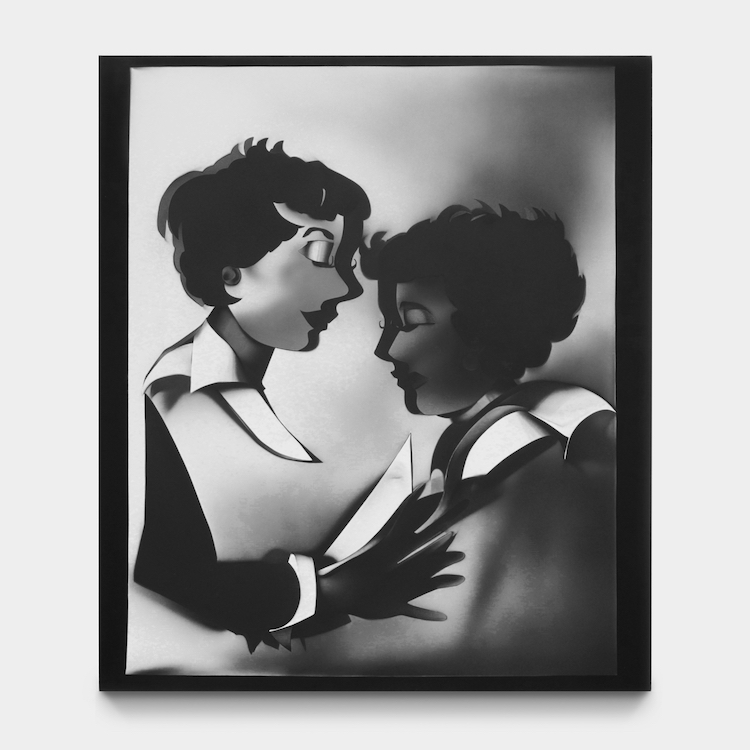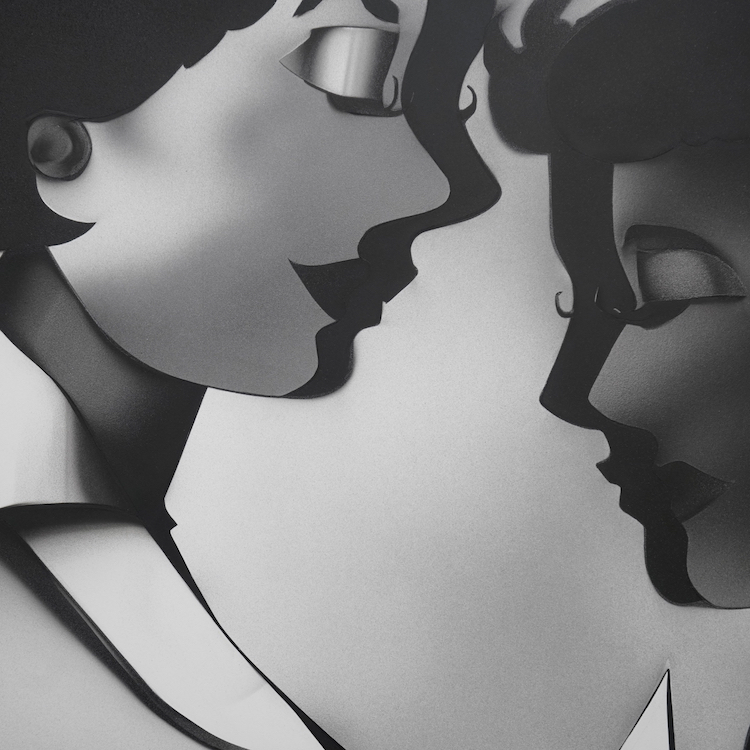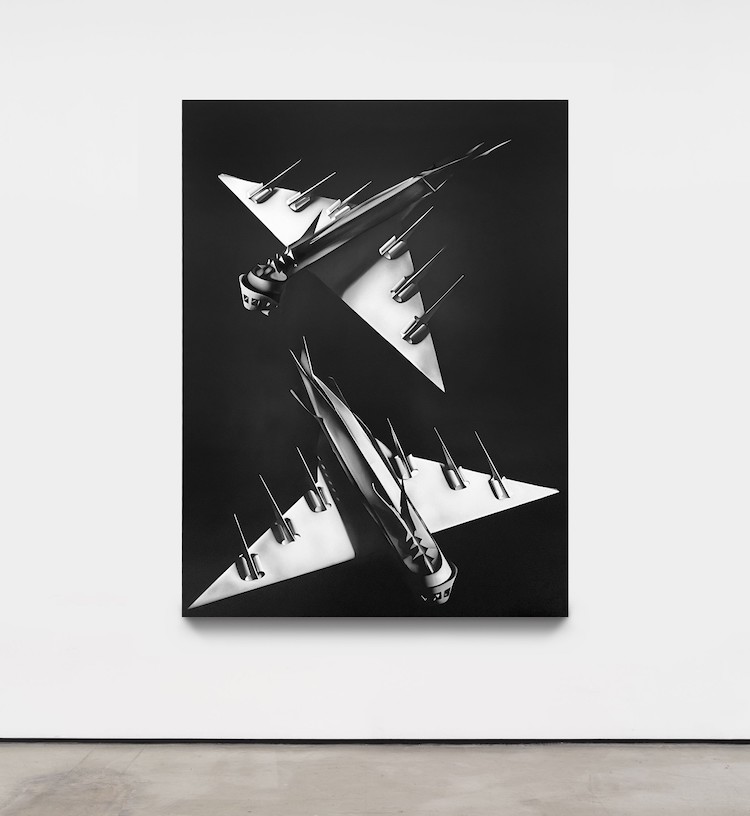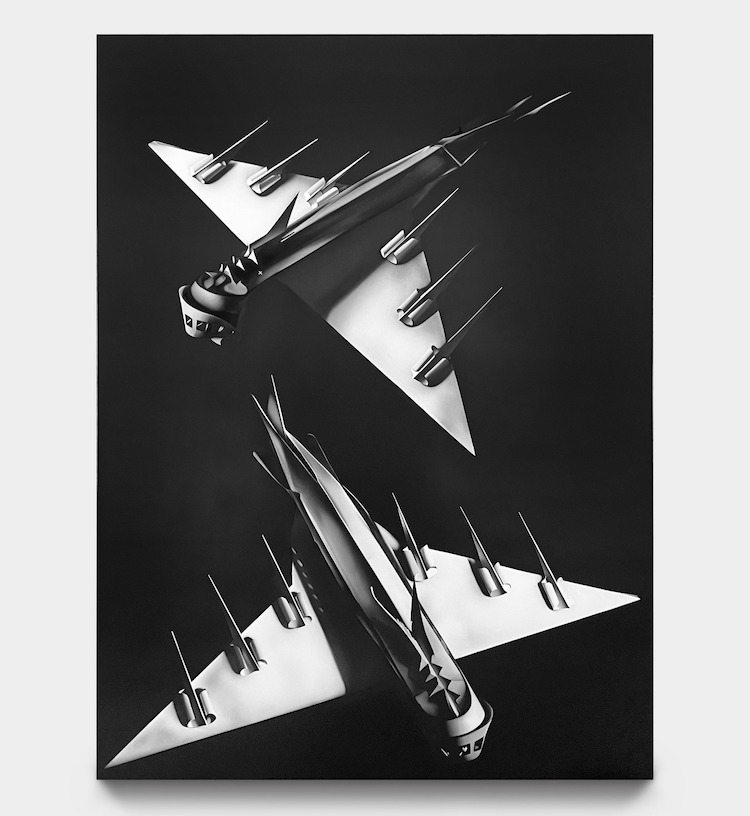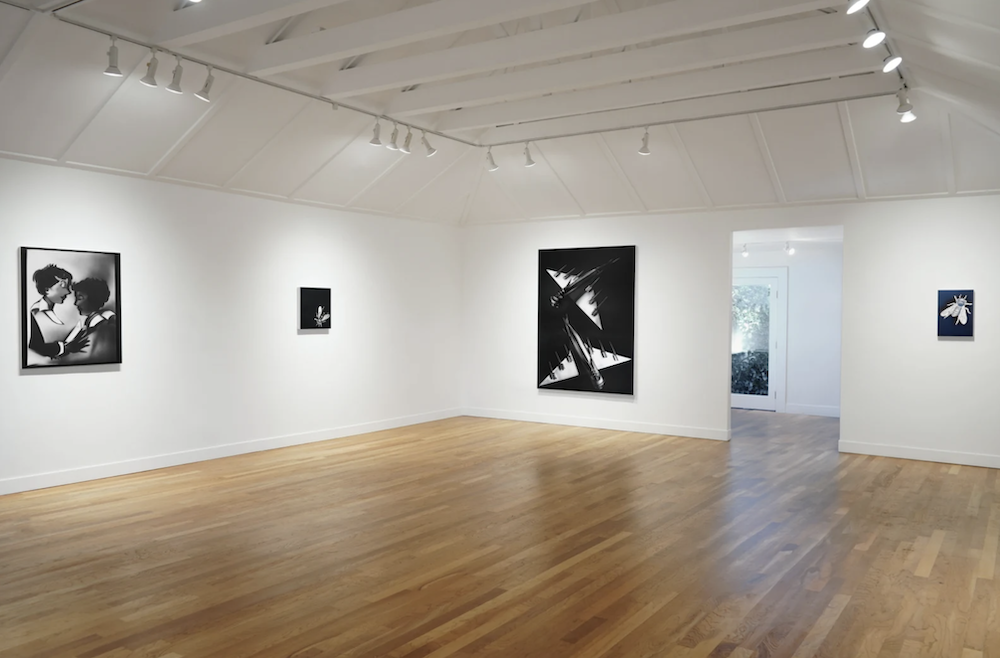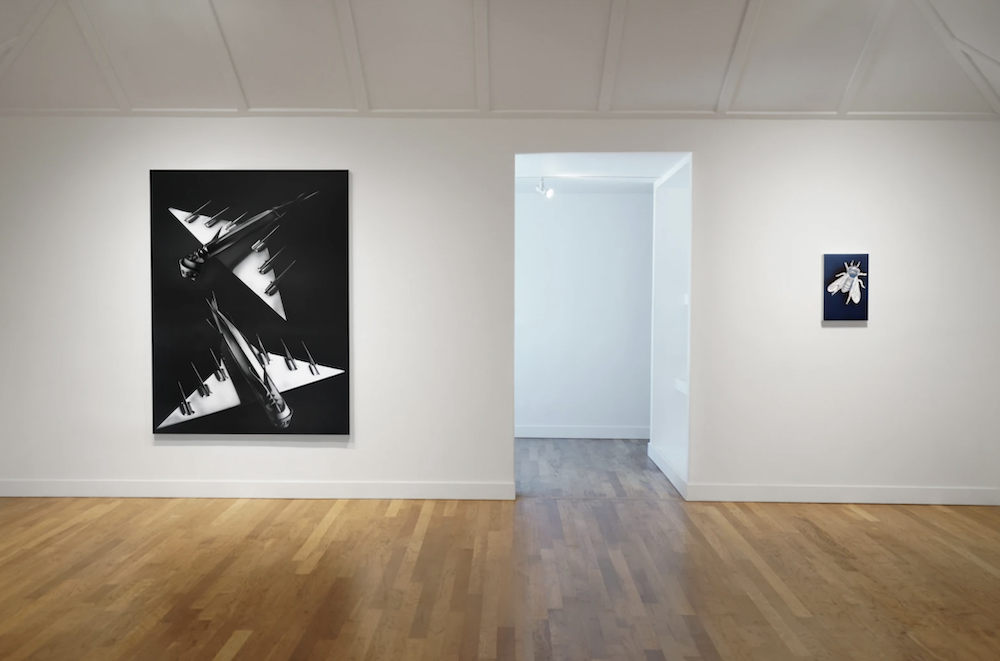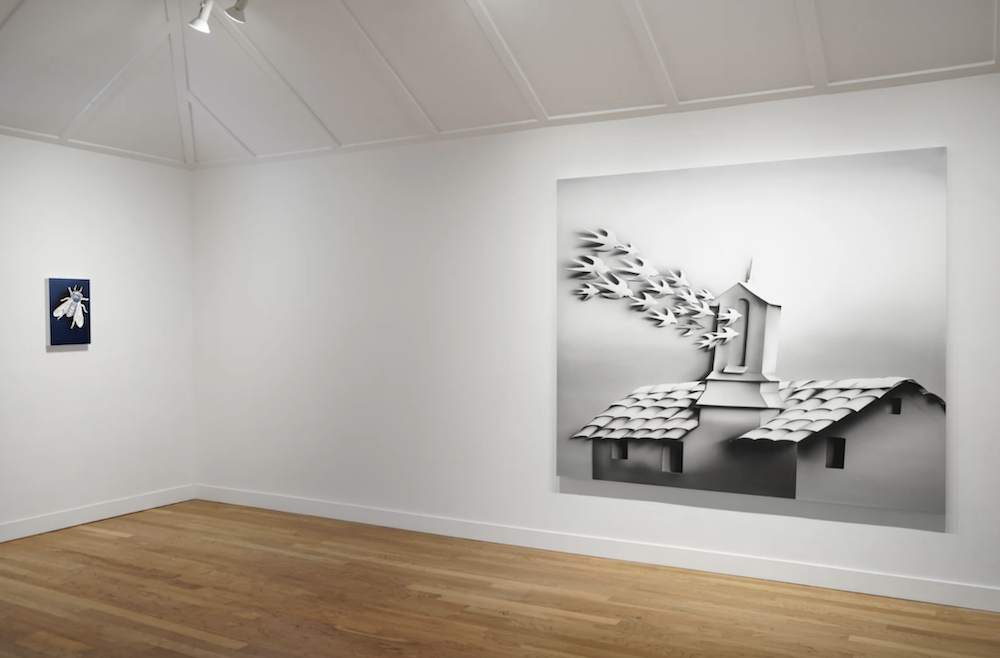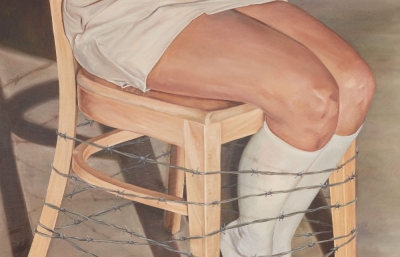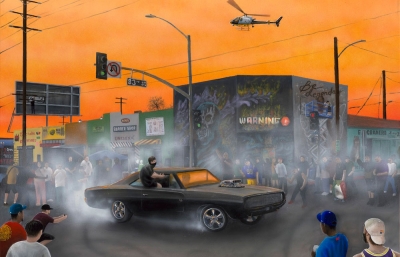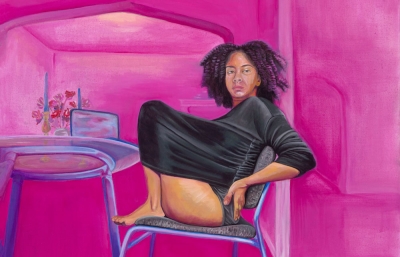M+B is pleased to present Bigmouth Strikes Again, an exhibition of new works by Kara Joslyn. This is the artist’s third solo show with the gallery. The exhibition opens will run through November 11, 2023.
Kara Joslyn is a painter known for her meticulously delineated and starkly contrasting airbrushed paintings featuring symbols, figures, and motifs selected from mid-century instructional craft books with an exacting attention to detail. The source images from Joslyn’s paintings are already transposed: each one is a photo taken of an actual folded paper sculpture that was later printed on paper and bound in book form. Joslyn’s point of interest is yet another formal and graphic transposition, from craft book to a canvas panel with deliberately enlarged scale. Although the contrasting visual elements of Joslyn’s practice may initially suggest opposition or extremes – black and white; light and shadow – for an artist with a trickster-redeemer mythos, it is important to remember that nothing is truly as it seems.
Bigmouth Strikes Again further extends Joslyn’s signature contrasting system and explores the sensations of falling and flying. The exhibition consists of airbrushed polymer painted canvas panels featuring a range of transposed paper forms: ambiguously paired people; a flock of birds mid-flight, B-52 combat planes, and more. In Joslyn’s visual language, nostalgia is negated and is more indexical than sentimental. This is reinforced with a marked emphasis on dramatically cast, film noir-esque shadows that impress upon the viewer a sense of mystery and suspense akin to watching films by Alfred Hitchcock, such as Vertigo (1958) or The Birds (1963). The paintings do not reflect upon the past with the same tired rose-tinted glasses that are often attached to idyllic bygone eras and are instead, indiscrete signifiers of a persisting sense of the uncanny valley in daily life.
Joslyn’s practice contains a vast collection of mixed historic and cultural references ranging from music, film, tv, and literature to psychoanalytic, feminist, occultist, and existentialist philosophies. The exhibition borrows its name from a song on the critically acclaimed 1986 album The Queen is Dead by English luminaries The Smiths. Well known for his lyrical prowess, media controversies, and endless wit, The Smiths’ iconic singer Morrissey croons about an oft-misunderstood hyperbolic protagonist who is playfully aggressive, consciously flamboyant, and somehow manages to be both self-deprecating and self-aggrandizing in equal measure: Sweetness, sweetness I was only joking / When I said I’d like to smash every tooth in your head.
Morrissey is just another dandy, or neo-dandy, in Joslyn’s universe. Since her 2019 exhibition, Dandy in the Underworld, named after a song by T-Rex, fronted by beloved Marc Bolan, the artist’s well-seated resonance with the dandy is ongoing. Famed French poet Charles Baudelaire, in “The Painter of Modern Life / Le Peinture de la vie moderne” (1863), described “the dandy” as a counterpoint to the dull and dreary aspects of early modern life, the type of person that endlessly pursues aesthetic, cultural, and intellectual excellence and is driven by a “compelling need; alas only too rare today, of combating and destroying triviality.” By doing so, a dandy revels in “…the joy of astonishing others, and the proud satisfaction of never oneself being astonished”, a drive that is undeniably apparent in Joslyn’s work. However, it is important to note that historically both the dandy and the painter are imbued by a persisting patriarchal rationality – an oxymoron in and of itself – as inextricably male. Joslyn’s work responds to such archaic gender-based regulations as any authentic punk feminist artist would, by rejecting their absurd canonical power and recontextualizing them entirely on her own terms.
Although there is a degree of precariousness to Joslyn’s paintings, they are not without a sense of hope by way of fantastical escape. The movement of falling or flying in the work is reflective of the social, political, and cultural upheavals of late and the resulting feeling of profound alienation. But rather than offer neatly packaged reassurances or virtue-signaled niceties, Joslyn’s exhibition leads us through a secret doorway, far and away from the late-capitalist push to return to a false sense of “normal” and instead, is an invitation to explore the void, catch our breath, or lose ourselves entirely. And now [we] know how Joan of Arc felt. —Melinda Guillén, PhD



